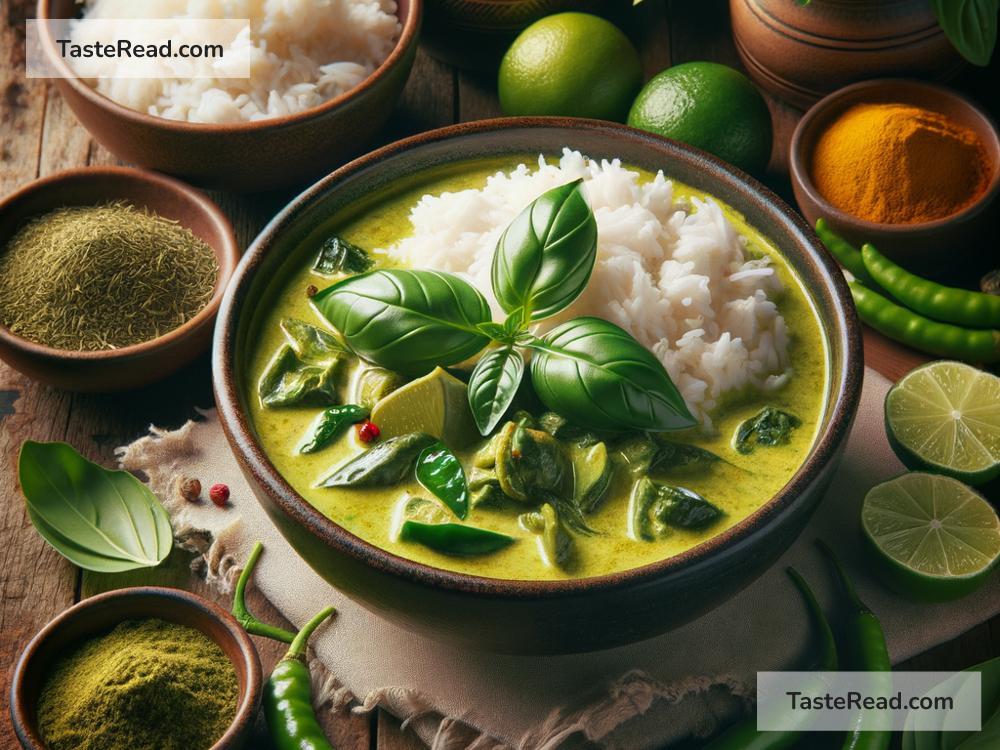The Influence of Thai Green Curry: A Story of Flavors Around the World
Thai cuisine is known for its bold flavors, fresh ingredients, and colorful dishes. One dish that has gained worldwide fame is Thai green curry. Its creamy texture, fragrant spices, and balance of sweet, spicy, salty, and sour notes make it a favorite for people all over the globe. But how did green curry become so influential? Let’s dive into the history, ingredients, and global impact of this amazing dish.
The Birth of Green Curry
Green curry, or Kaeng Khiao Wan in Thai, originates from central Thailand. It was first created in the 20th century and became popular due to its unique combination of flavors. The name “green curry” comes from its bright green color, which is achieved using fresh green chilies as the base of the curry paste. In Thai cooking, curry is not just a dish—it’s a celebration of spices and creativity.
What sets green curry apart from other Thai curries, such as red curry or yellow curry, is its vibrant and fresh appearance. While red curries use dried red chilies and yellow curries rely on turmeric for their signature hues, green curry stays true to its lively color by using green chilies, fresh herbs, and vegetables.
The Key Ingredients
One reason why Thai green curry is so influential is its harmonious blend of ingredients. It begins with the curry paste, which is made of green chilies, garlic, shallots, lemongrass, ginger, galangal (a root similar to ginger), kaffir lime leaves, coriander roots, and shrimp paste. These ingredients are pounded together to create a paste bursting with flavor.
Coconut milk is another crucial element of green curry. This rich liquid softens the heat of the chilies and creates a creamy, velvety texture. Thai cooks also add vegetables like eggplant, bamboo shoots, and bell peppers, as well as proteins like chicken, fish, tofu, or shrimp. The dish is finished with fish sauce for saltiness and palm sugar for sweetness, creating a perfectly balanced flavor.
Traditionally, green curry is served with steamed jasmine rice, which helps soak up the flavorful sauce. In some parts of Thailand, it is also paired with rice noodles for a different twist.
The Global Journey of Green Curry
Thai food began spreading across the world in the 20th century, thanks to tourism and immigration. As travelers visited Thailand, they fell in love with its cuisine. Restaurants serving authentic Thai dishes started popping up in Europe, North America, and other regions. Green curry was one of the dishes that quickly became popular on menus everywhere.
Why did green curry win hearts internationally? One reason is its adaptability. While traditionally made with chicken or shrimp, green curry can be customized to suit different tastes or dietary preferences. Vegetarian and vegan versions of the dish are also widely available, using tofu or more vegetables to replace meat while still capturing the signature flavors.
Additionally, green curry appeals to people from different cultures because it combines familiar and exotic elements. The creamy coconut milk feels comforting, while the fragrant spices make the dish exciting and new to many. It’s not overly spicy compared to other curries, so people who are new to Thai food can enjoy it without being overwhelmed.
Green Curry in Fusion Cuisine
As Thai green curry spread across the world, chefs began experimenting with its flavors, creating fusion dishes that mixed Thai traditions with ingredients from other cuisines. Today, you can find green curry pizza, green curry pasta, or even green curry tacos! These creative interpretations blend the essence of Thai green curry with local cooking styles, showing how food can bring cultures together.
Some chefs use green curry paste to flavor soups, marinades, and sauces for various dishes. Others serve green curry alongside fried rice, mashed potatoes, or even crusty bread instead of jasmine rice. These new forms of green curry give people more ways to enjoy its flavors, proving its versatility and lasting appeal.
Why Green Curry Matters
Thai green curry is more than just a delicious dish—it represents the power of food to cross borders and bring people together. It’s a reminder that traditional recipes can influence cuisines far beyond their origins. By sharing green curry with the world, Thailand has made its mark on global culinary culture.
For food lovers, green curry is a gateway to exploring Thai cuisine and learning more about the ingredients and techniques that make it special. Trying green curry for the first time is often an exciting experience because of its bold flavors and bright appearance.
Conclusion
Thai green curry has come a long way from its humble beginnings in central Thailand to becoming a global phenomenon. Its irresistible combination of flavors and ability to adapt to different cultures make it one of the most influential Thai dishes in the world. Each time someone enjoys a bowl of green curry, they’re experiencing the magic of Thai cuisine and its rich history.
So, the next time you eat green curry, take a moment to appreciate the journey it has made—from the kitchens of Thailand to plates across continents. It’s not just a dish—it’s a story of connection, creativity, and the universal love for food.


